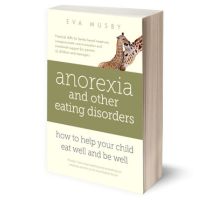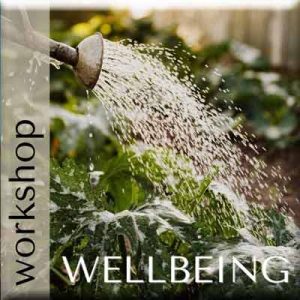Your cart is currently empty!

How to build up your own resilience and wellbeing when your child has an eating disorder
Excerpts from Chapter 15 of 'Anorexia and other eating disorders – how to help your child eat well and be well'.
You can also hear many of the main tools in my Bitesize audio collection. Here's one and a half minutes from my Bitesize audio collection, on 'The best psychological tools for these extraordinary times':
This chapter is all about you – your wellbeing, resilience, and strengths – so you can cope right now and begin to flourish in the longer term. Whether you’re gathering the strength to serve a meal or to stay steady through emotional exhaustion, you’ll find psychological tools here – and nourishment for your soul.
This is the chapter that too many parents skip. Our children are suffering, so tending to our own wellbeing feels absurd – a luxury we can’t afford. We bristle when people tell us to take care of ourselves. ‘A manicure?!’ we fume, ‘what the #$%# would I do with a #$%#-ing manicure! It’s a #$%#-ing break I need!’ We feel alone and misunderstood. Outsiders don’t appreciate that our situation is too serious to be solved with a bubble bath – and that, in any case, we don’t have a minute to ourselves.
And at the same time, we often feel at the very edge of what we can bear. Coping tools that used to serve us well are no longer up to the job. We say, ‘I don’t know how much more I can take.’ Our heads are barely above water. We want everything to return to normal now, yet we’ve learned that caring for our children is a marathon, not a sprint. And life doesn’t stop just because they’re ill. The boiler stops working. An aged parent fractures a hip. A pandemic happens.
We need stamina and endurance to keep going – and resilience so we can recover from knocks and move onwards and upwards with confidence. Besides, we are role models for our children: it helps them to see how we manage emotions, and how life can be good. It’s what we want for them, isn’t it? To live life to the full. It must be a relief for them to see they’ve not destroyed us, and that we continue to provide the wisdom and stability they need.
In this chapter, I’ll share the psychological tools I found most wonderful. Many take neither time nor money. If you’re sick of reading, please know I cover the main tools in my Bitesize audio collection. And although what follows is self-help, please remember: humans need humans. This is very much a time to reach out to kind friends or professionals. As suffering is really not much fun, I hope what follows will speed your emotional journey.
[Jumping to another section of the chapter…]
Distraction
Tool number two is distraction. Sometimes we're too distraught to self-connect – to turn inwards. It can feel risky to sit with our emotions, because we’re alone and might get overwhelmed. Or because we could cry at the most inconvenient time. Maybe we’ve tried introspection or mindfulness, only to find it makes our ruminating worse.
This is where distraction becomes precious. It interrupts the flow of catastrophising or critical thoughts. Our nervous system stops perceiving threats, and allows our state to shift away from fight, flight or freeze. With just a few minutes of distraction, the world can feel like a better place.
Glimmers and glows: notice and soak in the good
The next tool in my favourites list is appreciating good things, big or small. This tip is especially useful when you have no time (or money) for what used to give you a boost. As you go about your demanding day, look for things that delight your senses and feed your soul. Notice the beauty of a flower, the smell of coffee beans, the warmth of water as you wash your hands, or the fluffiness of your slippers. Appreciate the smoothness of your cat. Laugh out loud at your dog’s antics. Pause at the window to take in a sunset.
Breathe in the wonder. If, for a moment, you feel at one with the world, stretch out the moment. If a sense of gratitude or joy bubbles up, magnify it.
Play music that energises rather than depresses. Listen to podcasts featuring inspiring people. Online, steer away from negativity and instead seek out images and stories that lift you. There’s a picture of Snoopy hugging his little bird friend, Woodstock, which thrills me every time I see it.
Perhaps your child gave you a rare smile this morning, and suddenly you felt hope that your kid was back. Let your heart soar. Do you tend to minimise these joys? (‘Mustn’t get my hopes up! Mustn’t tempt fate! It will all be a big disappointment!’) Actually, anticipatory grief doesn’t offer protection. If your hopes are dashed, you will suffer… and you’ll be more ready to bounce back if you’ve nourished yourself in the meantime. Athletes build up their bodies. Parents build up their wellbeing.
Every time you notice something good (some call it a ‘glimmer’), pause for a second and amplify the feeling in your body – turn that ‘glimmer’ into a ‘glow’. Our brains evolved with a negativity bias to ensure survival, not happiness. We naturally dwell on what has gone wrong – or what might. When that state persists, our bodies stay flooded with stress chemicals like adrenaline and cortisol. Over time, that’s exhausting. But whenever you allow yourself to enjoy something positive, your body switches to producing feel-good hormones. Notice the feeling and amplify it.
I used to feel like nothing short of a ten-year holiday on a tropical island could possibly fill up my tank. It was humbling to discover that one hour of companionship, one minute of laughter, or one kind gesture from a loving person could top up my wellbeing. My external circumstances were just as hard, but the shot of feel-good chemicals moved me to a better state, making me more resilient.
[Jumping to another section of the chapter…]
Coping moment by moment
Feelings are in-the-moment things. In Chapter 13, I described them as waves that rise and subside. They pass. They transform into something else. Your emotions may be at rock bottom now, but we can’t predict how they will be in ten minutes or ten days. These days, the only certainty I have about my emotions is that they come and go – and the less I let my thoughts get them tangled up with them, the more likely they are to move on.
When I realised I was stressing out about the next year, the next week, or even the next hour, I decided to notice how, moment by moment, I was coping. Sometimes I had to subdivide the moment into milliseconds, just so that I could tell myself, ‘Right now, this instant, I’m actually fine.’
You could notice that the only reality is the present moment. This instant. This instant is where you’re living and breathing, where the ground is under your feet. The past is gone; the future doesn’t yet exist.
I decided that if I could be fine in the present, even when things were horribly tough, I could trust I’d most likely be fine in future, present moments too.

I wonder if you’ve ever done this with physical pain. You’ve bitten through a chunk of your tongue and it’s hurting like hell, but just now, this second, it’s bearable. And this next second is OK too. And so on. You might even start noticing that the pain subsides, simply because it’s not aggravated by catastrophic thoughts.
Noticing that we are coping in the moment allows us to deal with our fears one step at a time. From the excellent book Parenting Your Anxious Child with Mindfulness and Acceptance by Christopher McCurry:
“Sometimes all we need is just a glimpse of where to go and what to do, and we can take the next step – and then the next and then the next.”
[End of extracts from the chapter]
In this chapter:
- My search for new ways to deal with adversity
- Get to know what sustains you
- Self-compassion
- Distraction
- Glimmers and glows: notice and soak in the good
- Use your body to trick your mind
- Good-enough Zen, or five percent better
- Coping moment by moment
- Being in the moment
- Choose where you put your attention
- Deep questions
- Imagery to help you get grounded and peaceful
- Mindfulness
- Acceptance: work with reality, not against it
- Trust that you have resources
- What to do with fear
- After the illness: will you be well?
- Mistakes, blame and self-acceptance
- Sadness, grief and … joy
- Writing a diary: self-help or rumination?
- Helper's high
- An attitude of gratitude
- Joy
That's the end of the book. Sign up to my mailing list to stay in touch!
Want to keep the support going? My Bitesize audio collection has all the main tips of the book. And you can also request individual support from me:
Where to now?
* Three routes out of post-traumatic stress disorder (PTSD) *
* Psychotherapy approaches: which might help? *
* My guide to self-compassion on 'Self-compassion: how to recover your inner strength' *
- And a very simple version of self-compassion: ‘OK’: two letters for two steps to mindfulness and compassion *
* Internal conflict: self-compassion and how to mediate arguments in your brain *
* My YouTube: ‘The hero’s journey: resilience and wellbeing for parents’ *
* I sometimes run a workshop on this topic *
-
%27%20fill-opacity%3D%27.5%27%3E%3Cellipse%20fill%3D%22%23f7d0b6%22%20fill-opacity%3D%22.5%22%20rx%3D%221%22%20ry%3D%221%22%20transform%3D%22rotate(138.6%2034.3%20182.4)%20scale(119.26546%20138.54563)%22%2F%3E%3Cellipse%20fill%3D%22%23162b36%22%20fill-opacity%3D%22.5%22%20rx%3D%221%22%20ry%3D%221%22%20transform%3D%22matrix(-3.6903%20-51.82057%20298.07328%20-21.22665%20194.7%2098.8)%22%2F%3E%3Cellipse%20fill%3D%22%23007ab2%22%20fill-opacity%3D%22.5%22%20rx%3D%221%22%20ry%3D%221%22%20transform%3D%22matrix(43.81505%205.84618%20-39.52193%20296.20309%2022%20107.3)%22%2F%3E%3Cellipse%20fill%3D%22%23ce8143%22%20fill-opacity%3D%22.5%22%20rx%3D%221%22%20ry%3D%221%22%20transform%3D%22rotate(-150.3%20112.3%2069.3)%20scale(84.44617%2041.41259)%22%2F%3E%3C%2Fg%3E%3C%2Fsvg%3E)
Essentials: how to succeed with meals and other priorities
$80.00 Book Now! -
%27%20fill-opacity%3D%27.5%27%3E%3Cellipse%20fill%3D%22%23aad5ee%22%20fill-opacity%3D%22.5%22%20rx%3D%221%22%20ry%3D%221%22%20transform%3D%22matrix(157.38962%20132.53437%20-56.73966%2067.38051%20189.8%2052)%22%2F%3E%3Cellipse%20fill%3D%22%23d7853d%22%20fill-opacity%3D%22.5%22%20rx%3D%221%22%20ry%3D%221%22%20transform%3D%22rotate(31.5%20-373.6%20296.4)%20scale(298.82813%20109.8453)%22%2F%3E%3Cellipse%20fill%3D%22%2344ac90%22%20fill-opacity%3D%22.5%22%20rx%3D%221%22%20ry%3D%221%22%20transform%3D%22matrix(-17.8881%2034.40046%20-108.96557%20-56.6617%20273.8%2011.3)%22%2F%3E%3Cpath%20fill%3D%22%23cca701%22%20fill-opacity%3D%22.5%22%20d%3D%22M-57.8%20295.9l6.2-44.1%20197.3%2027.7-6.2%2044.1z%22%2F%3E%3C%2Fg%3E%3C%2Fsvg%3E)
Extinguish fears: how to bring back flexibility
$40.00 Book Now! -

Freedom: how to bring back independence
$40.00 Book Now! -
%22%20transform%3D%22translate(.6%20.6)%20scale(1.17188)%22%20fill-opacity%3D%22.5%22%3E%3Cellipse%20fill%3D%22%23c7d5d6%22%20rx%3D%221%22%20ry%3D%221%22%20transform%3D%22matrix(-43.87207%20-11.01446%2062.09296%20-247.32461%2026%2044.7)%22%2F%3E%3Cellipse%20fill%3D%22%2360072b%22%20cx%3D%22168%22%20cy%3D%22251%22%20rx%3D%22128%22%20ry%3D%2247%22%2F%3E%3Cellipse%20fill%3D%22%23be2500%22%20rx%3D%221%22%20ry%3D%221%22%20transform%3D%22rotate(-115%2086.8%20-11.7)%20scale(30.6411%2068.7123)%22%2F%3E%3Cellipse%20fill%3D%22%23732545%22%20rx%3D%221%22%20ry%3D%221%22%20transform%3D%22matrix(-38.70059%2017.06032%20-29.75301%20-67.49339%20248.2%20157)%22%2F%3E%3C%2Fg%3E%3C%2Fsvg%3E)
Communication skills to support your child and be more effective
$40.00 Book Now! -
%22%20transform%3D%22translate(.6%20.6)%20scale(1.17188)%22%20fill-opacity%3D%22.5%22%3E%3Cpath%20fill%3D%22%233a3c30%22%20d%3D%22M58%20104l211%20167H9z%22%2F%3E%3Cellipse%20fill%3D%22%23adb582%22%20cx%3D%2280%22%20cy%3D%221%22%20rx%3D%22117%22%20ry%3D%22117%22%2F%3E%3Cellipse%20fill%3D%22%231a162c%22%20rx%3D%221%22%20ry%3D%221%22%20transform%3D%22matrix(36.31757%2040.76194%20-27.85407%2024.81707%20255%20112)%22%2F%3E%3Cellipse%20fill%3D%22%23a9a7b3%22%20rx%3D%221%22%20ry%3D%221%22%20transform%3D%22matrix(-54.67352%20-46.36652%2019.2137%20-22.65602%20140.8%2093)%22%2F%3E%3C%2Fg%3E%3C%2Fsvg%3E)
Grow stronger – Tools for your own wellbeing
$40.00 Book Now!
Last updated on:
Comments
-
Thank you. Good to know the cover and title work for you. I'm so very pleased that you found something to give you peace and courage for the next day. Thank you so much for letting me know. Wishing you lots more of that.
Eva -
Having a glum day & just popped by. Read the section on joy and am now going to sleep peacefully ready to start again tmrw. ps Love the cover & title.
-
I have read this section and reflected on it in discussion with my counsellor. It has truly helped me to consider why I have become overtly emotional with every anorexic outburst. The fears you have discussed are precisely those that fuel my responses and considering this and consciously making a decision to contain these thoughts and remain in the moment have enabled me to not only regain control over my own despair but to feel that I CAN and Will make a positive difference to what is happening in the here and now.
-
Thank you for letting me know how this chapter is supporting you. It's so much what I've been hoping for. And I'm so glad you have a counsellor by your side.
It sounds like you're able to acknowledge big fears and at the same time accessing vast reserves of power through being in the present moment. I'm thinking of you, and of all those in a similar position, with much kindness and admiration.
-
-
Thank you for your clear and insightful writing. I came across your draft whilst in the middle of an emotional meltdown, both mine and my daughter's. With your advice, I turned the situation round. Deep breath and hand on heart. I am new to this but learning very fast or trying to. In my case, every mistake is a treasure has saved me from sinking into depths of despair.
-
It's so good of you to let me know. This is so much what I'm hoping for with this book, and it fills my heart to imagine you having turned your situation round and for your despair to be lifted. I'm also sending you warm wishes for your progress to continue and for your resources to keep strengthening.
Love
Eva
PS. If you have advice on bits to cut or bits that are missing, I'm always open to hearing it. I'm terribly conscious that readers need answers fast.
-
-
Thank you, that's so helpful. I'm going to blend those two suggestions of yours into my draft, if that's OK with you. I'm sure they'll help others.
If you get round to reading the next section, I'll be curious for your feedback: it's the one I'm the most uncertain about at the moment.
I hope your list will soon be one of those things you look at in awe, prompting you to reflect on the endurance and courage you and your family found in extreme times.
Eva -
Hi Eva
I'm finding all this so helpful. Some is new, but a lot is so similar to my journey as a parent, i definitely think you're on the right track.
One of the things in my tool kit which helped was recognizing that if I lost it with anger, tears, harsh ( sometimes horrible) words, it was done, I couldn't change what had happened, but I could model correcting it. So it wasn't the mistake which mattered, it was what I did with it afterwards. This helped me soothe myself.
One practical thing which really works for me; I have written myself a list of principles / rules to read when I am in the quagmire. They are things like; good enough is ok stop trying to be the best mum in the world ( I wonder where my D's perfectionist traits come from…..) . So I wrote them when I was calm, and I read them when I am not. They help ground me, and they remind me why we're doing things in a certain way. The list gets amended with time, with some items no longer relevant & new ones added.










LEAVE A COMMENT (parents, use a nickname)